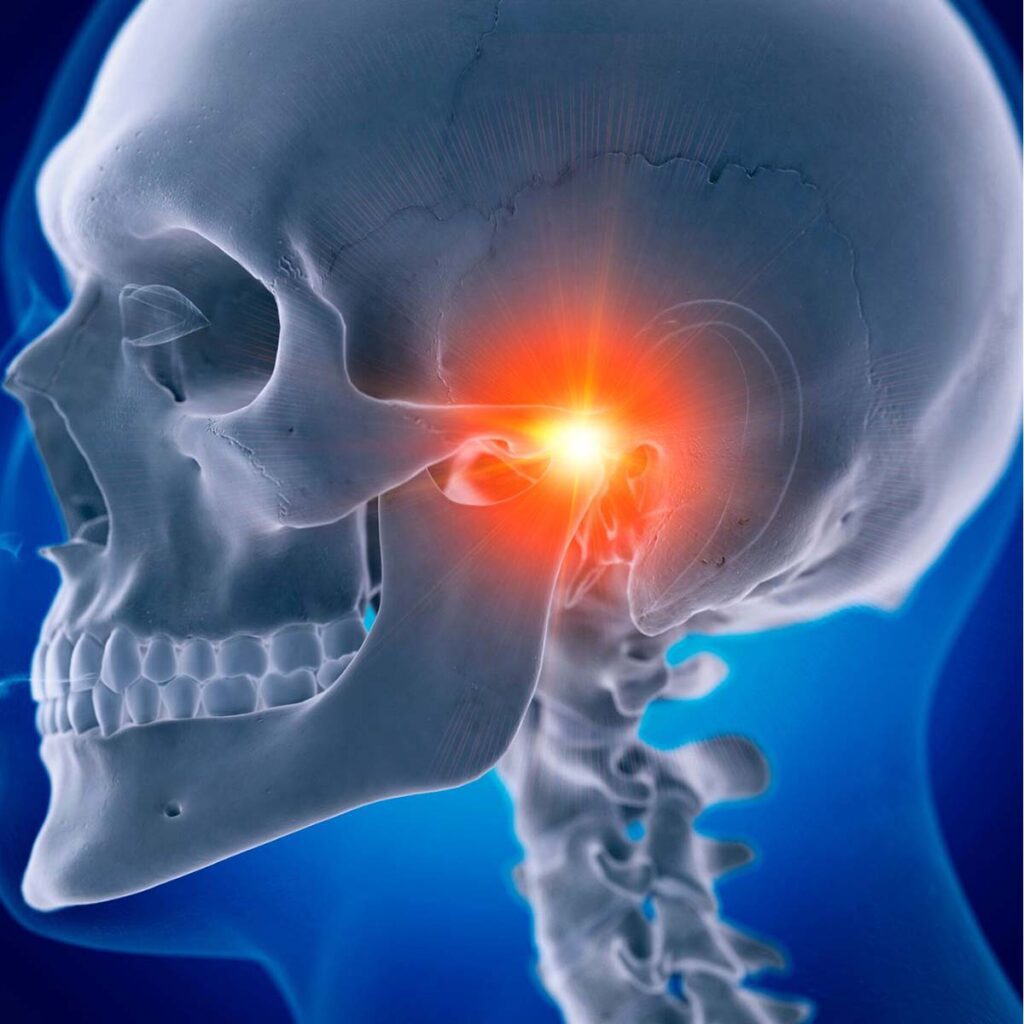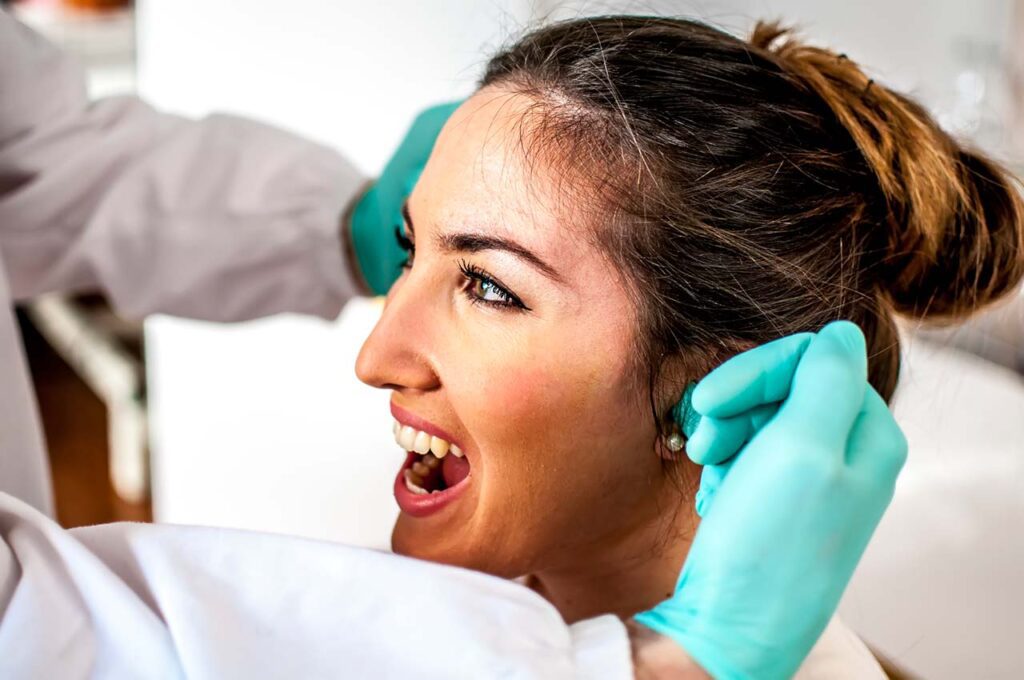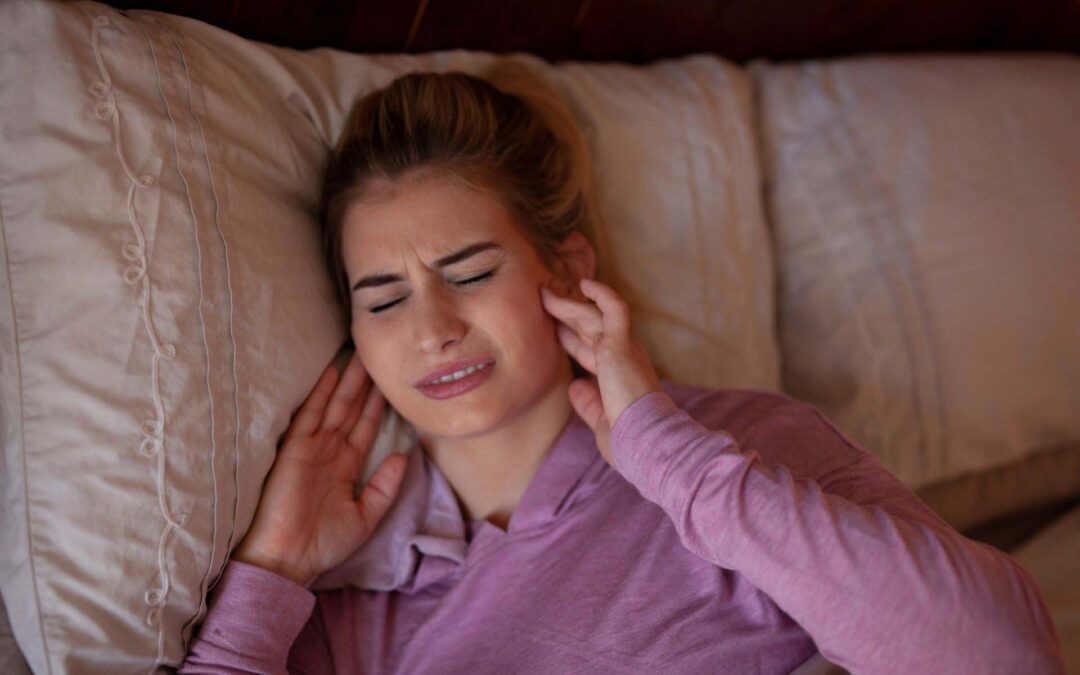Understanding TMJ Disorders and Jaw Pain
Do you wake up with headaches, beginning near your temples, grind your teeth to the point of facial fatigue, or have to wear a night guard for your teeth? These are classic signs of a “jaw problem;” sometimes called “TMJ.” TMJ stands for Temporomandibular Joint, a critical area often associated with TMJ disorders and jaw pain. The truth is, it’s not just the jaw that’s the problem; it’s often an imbalanced bite that triggers clenching, grinding, headaches, and jaw pain – from jaw muscles that are over-worked. This section will delve into the cycles of jaw and headache pain and explore ways to reduce their constant effect on you, including the use of nonsteroidal anti-inflammatory drugs (NSAIDs) for pain relief and the benefits of physical therapy.

The Root Causes of TMJ Pain
You may have been told that your stress causes your TMJ problems; that all you need to do is “relax and only allow your teeth to touch when eating.” However, temporomandibular disorders are complex conditions that require more than just relaxation techniques. They can lead to chronic pain and significantly impact your quality of life. Stress is indeed a factor, but it’s the imbalances in how your upper and lower teeth meet that can cause TMJ pain and trigger TMJ symptoms. For some, eating soft foods, avoiding extreme jaw movements, and practicing relaxation techniques may offer temporary relief, but addressing the root cause is key to long-term pain relief. To understand this problem further, let’s draw a parallel to daily life. Imagine you’re backpacking with a rock in your boot causing discomfort. You have two choices: stop to remove the rock, or continue, hoping it turns to powder. Similarly, ignoring TMJ dysfunction can lead to worsening jaw pain, facial pain, and headaches. Women, in particular, may find that even slight imbalances in front and back teeth alignment can trigger a cycle of discomfort and pain, emphasizing the need for a comprehensive approach to TMJ treatment.
Advanced TMJ Treatment Options for Lasting Relief
Night guards are often seen as a solution, acting as a band-aid by providing a barrier against teeth grinding and jaw clenching. However, true relief comes from addressing the underlying temporomandibular joint disorders. An orthodontist specializing in TMJ treatment can offer nonsurgical treatments such as oral splints, physical therapy, and muscle relaxants to manage TMJ symptoms effectively. Moreover, TMJ arthroscopy or oral and maxillofacial surgery may be recommended in severe cases where nonsurgical treatments are insufficient. If you’re looking for more than just temporary relief, it’s crucial to find an orthodontist who listens to your discomfort patterns carefully. By understanding when and where your discomfort occurs, an orthodontist can tailor TMJ treatment plans that may include adjusting the bite, oral and maxillofacial surgery for severe TMJ disorders, or physical therapy to strengthen jaw muscles and improve jaw movement. These targeted treatments aim to reduce bite imbalances, offering a more permanent solution to temporomandibular joint dysfunction.
Take the Next Step
If you desire more comprehensive information about advanced TMJ treatment options and how they could alleviate your TMJ problems, jaw pain, and headaches, we encourage you to leave your name and email below. At Kelleher Orthodontics, located in Folsom, CA, and Davis, CA, we are committed to providing personalized care that addresses the root cause of your discomfort, helping you achieve lasting pain relief and improved quality of life.

